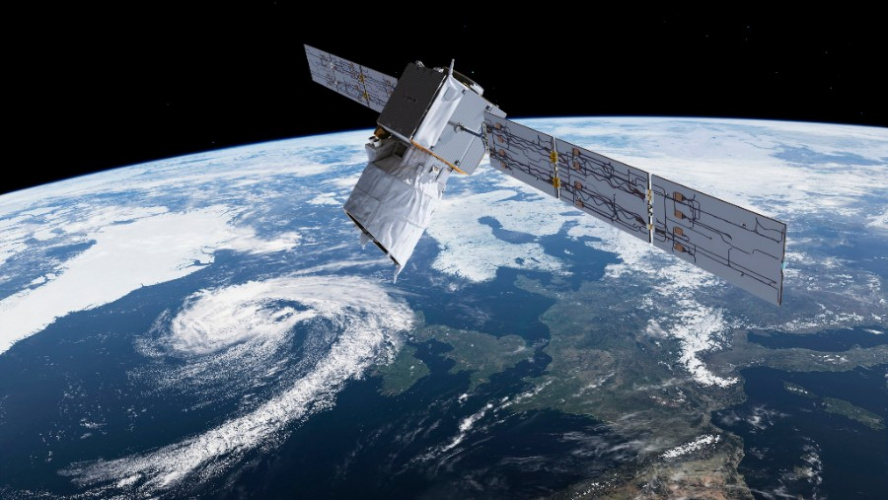Announcing the news via a thread on Twitter, ESA explained how its Aeolus Earth observation satellite performed a manoeuvre to take it off a potential collision course with one of SpaceX’s Starlink satellites. Aeolus has been in orbit since August 2018, while the Starlink satellite was one of 60 launched aboard a Falcon 9 in May 2019. According to Forbes, SpaceX refused to move its spacecraft - dubbed Starlink 44 - forcing ESA into evasive action for Aeolus.
https://twitter.com/esaoperations/status/1168533241873260544
SpaceX’s Starlink programme is intended to provide global broadband coverage and may eventually be comprised of up to 12,000 low earth orbit satellites. ESA says this is the first time it has had to perform such a manoeuvre in order to avoid a collision with a so-called ‘mega constellation’ satellite.
RemoveDEBRIS consortium captures space junk with harpoon
Junk hunting satellite uses plasma thrust to de-orbit debris
“Experts in our #SpaceDebris team calculated the risk of collision between these two active satellites, determining the safest option for #Aeolus would be to increase its altitude and pass over the @SpaceX satellite,” ESA said in a tweet.
“The manoeuvre took place about 1/2 an orbit before the potential collision. Not long after the collision was expected, #Aeolus called home as usual to send back its science data – proving the manoeuvre was successful and a collision was indeed avoided”

Forbes reported that ESA’s Holger Krag, head of the agency’s Space Debris Office, said the risk of collision between the two satellites was 1 in 1,000, which is ten times higher than the threshold that demands evasive action. Although Aeolus had been occupying its orbit for nine months longer than Starlink 44, there are no rules governing who should give way in such a scenario. However, this is something that Krag hopes will be addressed in the future.
“There are no rules in space,” he said. “Nobody did anything wrong. Space is there for everybody to use. There’s no rule that somebody was first here. Basically on every orbit you can encounter other objects. Space is not organised. And so we believe we need technology to manage this traffic.”
ESA said via Twitter that artificial intelligence will be part of the technology solution for managing satellite traffic in the future. Manually detecting potential collisions and plotting evasive manoeuvres is a labour-intensive process and will not be sustainable as space becomes increasingly congested.
“These avoidance manoeuvres take a lot of time to prepare - from determining the future orbital positions of all functioning spacecraft, to calculating the risk of collision and potential outcomes of different actions,” said ESA.
“As the number of satellites in orbit increases, due to 'mega constellations' such as #Starlink comprising hundreds or even thousands of satellites, today's 'manual' collision avoidance process will become impossible.
“ESA is preparing to automate this process using #AI #ArtificialIntelligence. From the initial assessment of a potential collision to a satellite moving out of the way, automated systems are becoming necessary to protect our space infrastructure.”





Comment: How engineering innovations are transforming washing machine accessibility
I wonder if Mr Sawhney has considered a sit-on version, with pedals?